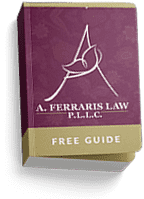 Photo by Jaeyoung Geoffrey Kang on Unsplash
Photo by Jaeyoung Geoffrey Kang on Unsplash
“Debt is the slavery of the free.” –Publilius Syru
Many of us have student loans. Many Americans with education debt apply for discharge relief and a new income-driven payment plan. The US Department of Education proposes a new income-driven repayment plan that caps monthly payments for undergraduate loans at 5% of a borrower’s discretionary income—that is half the rate borrowers must now pay under most existing plans.
The New Federal Loan Student Loan Debt Relief
Borrowers of federal loans may get a discharge of loan amounts up to $20,000. Single borrowers are eligible for this relief if their income is less than $125,000; married couples are eligible for relief if their income is less than $250,000.
How do you know if you have an eligible loan? You may go to studentaid.gov to look up what types of loans you have. If any of your loans state or identify as US Department of Education, it is an eligible loan to be partial fully or discharged up to $20,000. Everyone should go to studentaid.gov to review the type of loans they have and ensure their contact information is updated to receive notices.
Here are the types of federal student loans disbursed on or before June 30, 2022, that are eligible for relief:
The following types of federal student loans disbursed (as of when you received your loan funds) on or before June 30, 2022, are eligible for relief:
- William D. Ford Federal Direct Loan (Direct Loan) Program loans
- Federal Family Education Loan (FFEL) Program loans held by ED or in default at a guaranty agency
- Federal Perkins Loan Program loans held by ED
- Defaulted loans (includes ED-held or commercially serviced Subsidized Stafford, Unsubsidized Stafford, parent PLUS, graduate PLUS; and Perkins loans held by ED)
Consolidation loans are also eligible for relief if all of the underlying loans that were consolidated were education department-held loans and if they were disbursed on or before June 30, 2022.
If you made payments during the payment pause — from March 13, 2020, through Dec. 31, 2022 — and your current loan balance is below the amount of debt relief, you should be refunded, after you apply and receive debt relief under the debt relief plan, the amount you paid during the payment pause, but only up to the remaining amount of your eligible debt relief.
Here is the Website link to apply for the new student loan debt relief: https://studentaid.gov/manage-loans/forgiveness-cancellation/debt-relief-info
The application is straightforward and short. You can apply today through Dec. 31, 2023. Your student loan servicer should notify you when your relief has been processed. According to the deputy director of the National Economic Council, Bharat Ramamurti, the deadline to apply for forgiveness is November 15, 2022, before the current payment pause expires on Dec. 31, 2022.
If you are not eligible for debt relief or a reduced payment plan, speaking to a consumer attorney who focuses on student loan debt may provide you with some solutions regarding bankruptcy. The National Association of Consumer Advocates website: consumeradvocates.org provides resources and information for attorneys who focus on specific practice areas, such as student loans. The National Association of Consumer Bankruptcy website allows consumers to search the website to find a bankruptcy lawyer but does not allow for specific practice area searches. In Arizona, there are bankruptcy attorneys who focus on student loan help; see these websites for more information: https://www.arizonabankruptcylawyer.org/ and https://www.thompsonlawgroup.com/.
Beware of Scams
Please know that you should never pay for help with your federal student aid, for example, companies that claim that they will help you to obtain a loan discharge, forgiveness, cancellation, or debt relief. You should never reveal your personal information or account password to anyone. You can report scam attempts to the Federal Trade Commission by calling 1-877-382-4357 or by visiting https://reportfraud.ftc.gov/.
The information provided does not, and is not intended to, constitute legal advice; instead, all information is for general informational purposes only. This information may not constitute the most up-to-date information. The links provided are only for the convenience of the reader, A. Ferraris Law, PLLC and its members do not endorse the contents of the third-party references.
Copyright©2022, A. Ferraris Law, PLLC. All Rights Reserved.







